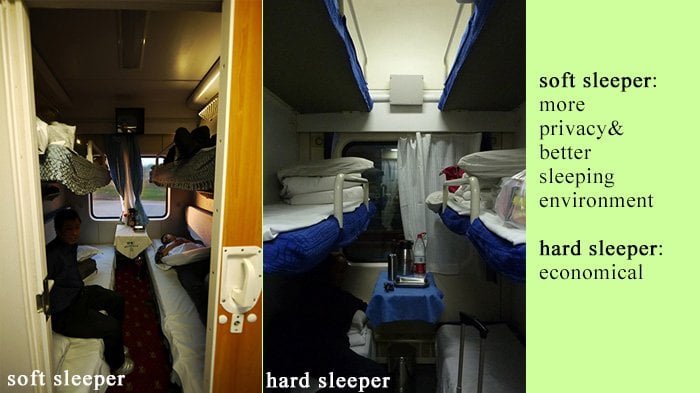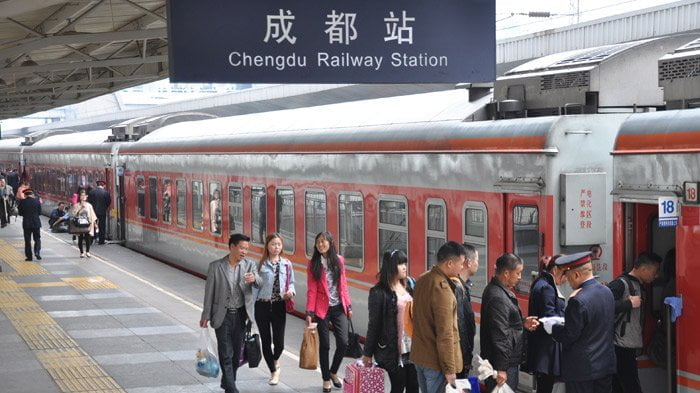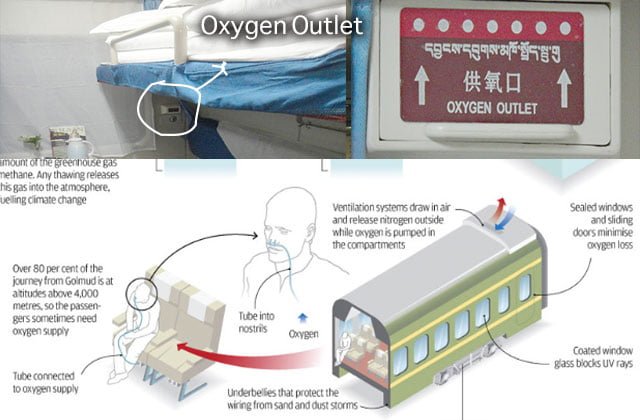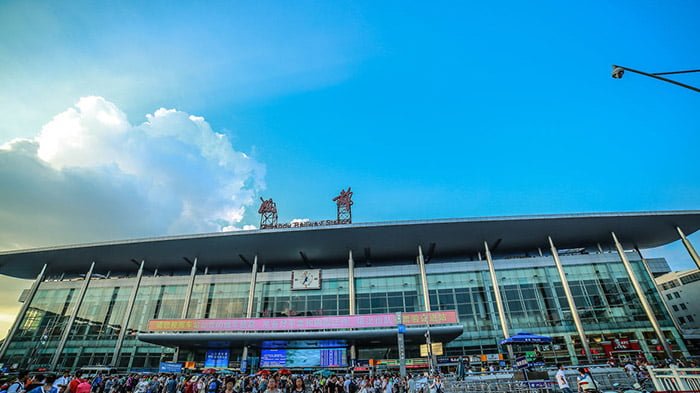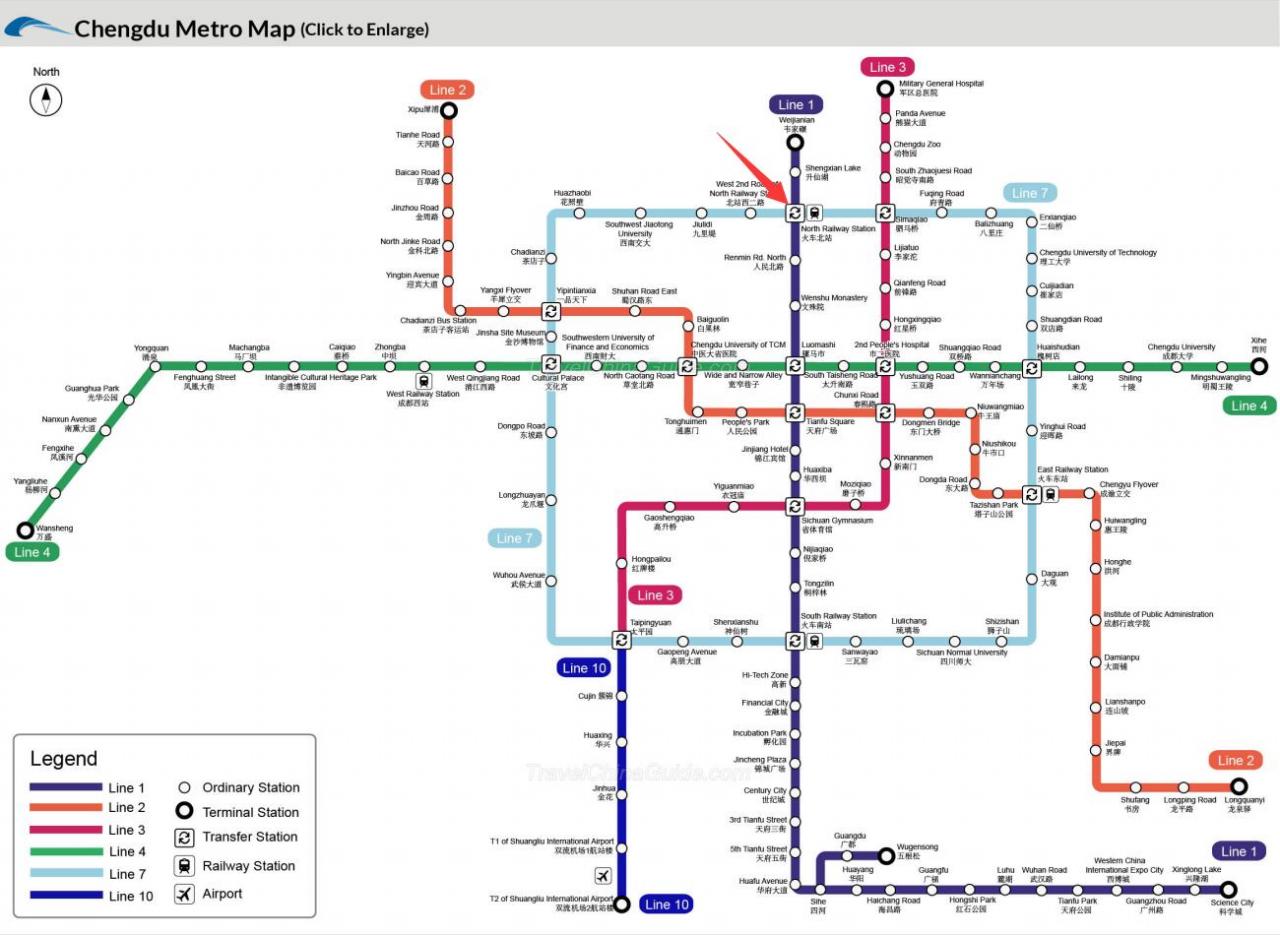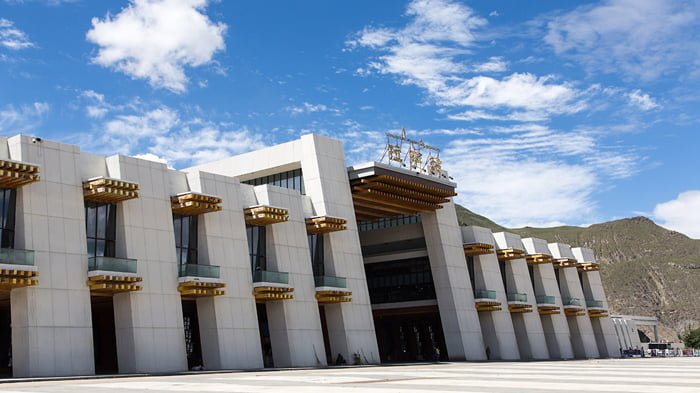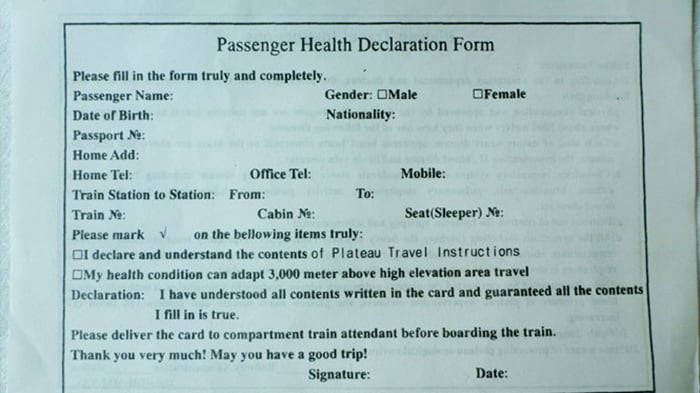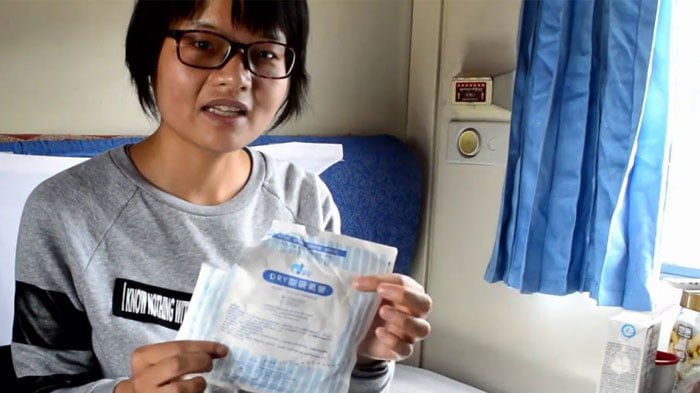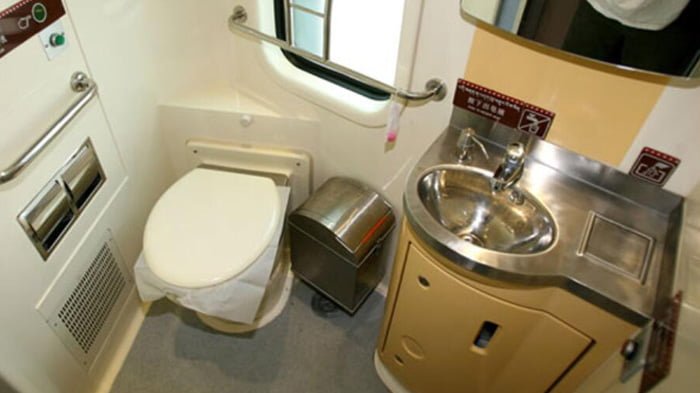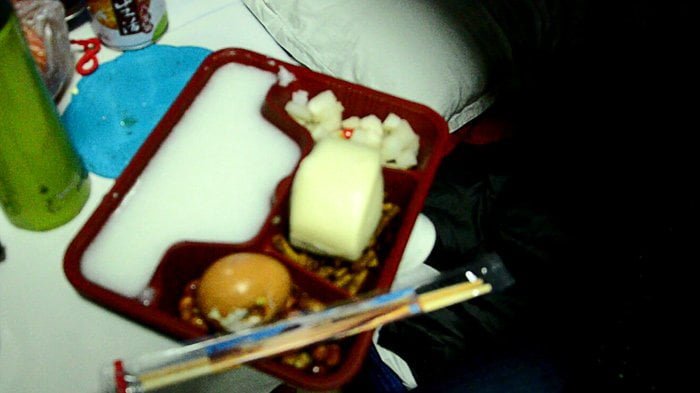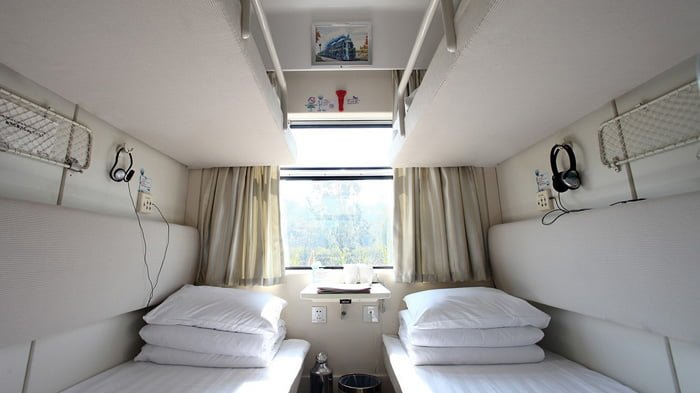Chengdu-Lhasa Train Z322 is a hot travel route bridging Tibet with the homeland of giant pandas. It departs every other day from Chengdu Railway Station (also known as Chengdu North Railway Station) at 21:37 and arrives at Lhasa at 9:55 on the third day morning , taking about 36:18 hours to ride through the 3,070 kilometers-long railway that crosses 5 provinces. The return train is Z324.
As the capital of Sichuan Province, Chengdu is one of the top visiting destinations for tourists in China and worldwide. The cute giant pandas, the delicious hot pot and Sichuan cuisine, the leisurely lifestyle, favorable geographical location and diversity of cultural and historic scenes in Chengdu have attracted tens of thousands of tourists every year. Reputed as the “Land of Abundance” , Chengdu is a city where you will never want to leave once you come.
Chengdu is the major gateway to the west of China, and the rapid development in recent years has also led to an upgrade in its public transportation system. Tourists can have easy access to Chengdu Railway Station via airport shuttle bus and the subway to take Chengdu-Lhasa Train to enjoy the breathtaking scenery along the Qinghai-Tibet Railway and acclimatize to the high altitude step by step.
Should I Choose Soft Sleeper or Hard Sleeper?
Why Soft Sleeper is the Best Choice?
Like each Lhasa-bound train, the train to Lhasa from Chengdu is also especially built for the high altitude environment and equipped with advanced facilities, such as air-conditioning, supercharging system, oxygen supply, altitude display, etc. The train is also tightly sealed so as to firstly keep the inside air pressure normal and secondly prevent passengers from littering. Besides, all the carriages are installed with double-paned windows and ultraviolet filters to protect passengers from ultraviolet radiation. Nowadays, the train journey is extremely popular for its breathtakingly unique scenery along the railway from Chengdu to Tibet.
Soft sleeper is more spacious than the hard one
In fact, there are three kinds of accommodations available on Chengdu-Lhasa train: soft sleeper, hard sleeper, and hard seat, of which the most comfortable one is the soft sleeper. The soft sleeper consists of 4 bunks (75cm*190cm) and promises more privacy and comfort with a sliding lockable door, which is highly recommended.
While the hard sleeper is made up of 6 bunks (60cm*180cm) and the living space varies slightly. The lowest bunks enjoy the largest living space whereas the top bunks are cramped. The cabin of a hard sleeper has no independent door to close when tourists want to sleep. Hard seat is not recommended given the long ride and nothing is more important than having a sound sleep.
The Schedule of Chengdu-Lhasa Train 2019
Train from Chengdu to Lhasa departs not daily, but every other day. Below is Chengdu to Lhasa Train Departure Frequency in 2019:
Jan: Even Days, Like 2,4,6…
Feb: Odd Days, Like 1,3,5…
Mar: Odd Days, Like 1,3,5…
Apr: Even Days, Like 2,4,6…
May: Even Days, Like 2,4,6…
Jun: Odd Days, Like 1,3,5…
Jul: Odd Days, Like 1,3,5…
Aug: Even Days, Like 2,4,6…
Sept: Odd Days, Like 1,3,5…
Oct: Odd Days, Like 1,3,5…
Nov: Even Days, Like 2,4,6…
Dec: Even Days, Like 2,4,6…
Trains depart from Chengdu and Chongqing respectively, for example, odd days in a month from Chengdu, and even days from Chongqing. Here I’ll show you an instance: when the Chengdu to Lhasa Train Z322 departs in odd days (1, 3, 5…) in September, the Chongqing to Lhasa Train will depart in even days (2, 4, 6…) in September.
Given this situation, if unfortunately, Chengdu to Lhasa Train does not depart on your date or you miss the train, you may take a fast train to Chongqing which is only 1.5 hours distance, to take train there the other day to Tibet.
Alternative Plans if Failed to Get the Soft Sleeper Ticket
Since the soft sleeper on Chengdu-Lhasa train is very popular, if you happen to fail to get the ticket, don’t worry, there are 3 alternative plans for you.
Option 1: You can book the hard sleeper ticket of Chengdu-Lhasa Train.
Option 2: As mentioned above, you can take the bullet train from Chengdu Railway Station or Chengdu East Railway Station to Chongqing North Railway Station and board the Chongqing to Lhasa Train there next day.
Option 3: You can take a flight from Chengdu Shuangliu International Airport (CTU) to Xining (the genuine starting point of Qinghai-Tibet railway), then head to Tibet by Xining to Lhasa train.
About ticket price:
The ticket prices above are the net price. In reality, as traveling in Tibet is so popular that the actual ticket demand far exceeds the supply, in-bound and out-bound tourists have to pay more than the net price to buy tickets. The actual price is subject to the market fluctuation. In some cases, the actual price could be double than the net price. Despite the uncertainty and difficulty in purchasing train tickets, Tibet Vista would manage to book tickets at a reasonable price ( usually 20 percent lower than the market price) and promise to offer free service for it. If tourists only want to buy train tickets via Tibet Vista without intending to travel to Tibet, Tibet Vista will have to charge a small amount of service fee.
How to Book and Get Tibet Train Tickets?
International travelers can’t enter in Tibet as backpackers and need the help of travel agency to apply for Tibet Travel Permit in advance. You do not need the permit to book the tickets but you do need it to collect the ticket and board the train.
1. How to Book Tibet Train Ticket?
Book train ticket with us (highly recommended)
To individual tourists, the best solution is to contact a reliable travel agency and book the Chengdu-Lhasa train ticket at least one month in advance. Tibet Vista can provide such timely tickets booking service, and also offer “Train Ticket + Tibet Tour” packages. Send a detailed booking inquiry to Tibet Vista
Book at 12306.cn or buy ticket at train station
Neither method is convenient for international travelers. The 12306.cn has no English version and the online payment is limited to a bank account in mainland China. The staff at the train station can’t speak English. For popular routes such as Chengdu to Lhasa train, during the peak season and even the off season of Tibet tourism, it is difficult for foreign tourists to book train tickets because they get sold out very quickly.
2. How to Get the Tibet Train Ticket?
In China, you need the paper train tickets to get into your train. If you book train tickets with us, you have two ways to get your paper tickets:
1. We deliver the paper tickets to your hotel or address in China (Recommended)
2. Collect them at the railway station
If you choose the delivery service, it is advisable to inform us 4 business days before departure. If you choose to collect them at the railway station, make sure to bring the confirmation number of train tickets, your Tibet Travel Permit as well as your valid and original passport. The confirmation number will be sent to you along with related train information once the tickets are confirmed, present it and the mentioned documents to the staff behind ticket windows to get paper tickets for free.
Chengdu Railway Station operates 24/7, but usually there are only a few ticket windows available after 11 p.m. Considering the long queues in front of the ticket window and the language barrier, it is advisable to arrive at the train station at least 2 hours before departure if you collect tickets on the same day.
3. How to Read the Train Ticket
Here are some useful phrases you may need to read Z322 Chengdu to Lhasa Train ticket:
成都站/ 成都北站: Chengdu Railway Station/ Chengdu North Railway Station
拉萨站: Lhasa Railway Station
xx年xx月xx日: xx Year xx Month xx Date
xx车xx号: xx Carriage xx Berth
上/ 中/ 下铺:Upper/ Middle/ Lower Berth
Information guide on Chengdu to Tibet Train Ticket
How to Board the Train?
Below are the steps to board a train in China:
Step1: Fill in the Health History Form
Before boarding the train, tourists are expected to fill out an health history form. If one has illness such as hypertension, stroke, chronic respiratory problem, and other cardiovascular disease, he or she shall no board the train for one’s health concern.
Step2: Pass Security Check
After your arriving at the right railway station, line up for the security check to enter into waiting hall: present your passport, Tibet Travel Permit and train ticket to the staff, put all your luggage such backpacks, carry-on bags on the security scanner conveyor belt, and walk through a detector gate and wait for staff to use a scanner on you to check forbidden articles.
Notice: Tourists should put your luggage to the X-Ray scanner and things like gun, poison, explosive, and chemical substance, etc are strictly forbidden.
Step3: Find the Waiting Room
Once enter into the waiting hall of Chengdu Railway Station, you can find an LED screen showing Train Number (车次), Terminal (终到站), Departing Time (开点) and Waiting Room (候车室). Get your waiting room information and wait for check-in there. Train number Z322 is well marked in the correct waiting room.
Step4: Board the Train
Usually check-in starts 15-30 minutes before departure and barriers close 5 minutes before departure. After check-in, you can find Led screen hang on the way to the train telling your platform (站台) and direction of your carriage (车厢). Follow the instruction and the staff waiting at the carriage gate will check your ticket again to make sure you board the right carriage of the right train.
The ticket inspector is checking tickets at Chengdu Railway Station when travelers are boarding the train.
Step5: Find Your Berth
After getting on the train, you can find your berth according to your ticket. Put your baggage on the rack overhead or under the lower berth. Your sleeper ticket will be exchanged for a plastic berth card by staff shortly after boarding. Staff will return your ticket and get back the berth card about half an hour before arriving at your destination.
FAQs:
Q1. Is it necessary to carry Tibet Travel Permit all the time?
Make sure you have your passport, Tibet Travel Permit and ticket with you as you could be checked many times during the long journey. It is also advisable to have many copies of Tibet Travel Permit.
Q2. Is it possible to swap ticket with other people to stay with friends or family in the same cabin?
Yes. It is acceptable. You may ask conductor to swap tickets with other passengers to stay with your family or friends. Do remember your cabin and seat No.
Q3. Is It Safe on the Tibet Train?
Having a ride on Qinghai-Tibet train is relatively safe as each compartment is independent and its door will automatically be closed at night. One is forbidden to enter the compartment without ticket. Of course, nowhere is safer than the compartments of soft sleeper. The cabin of soft sleeper can accommodate 4 travellers and there is a door to shut, which is the perfect choice for a family. Besides, the surveillance cameras and 24-hours police patrol make it even safer on the train.
Life Onboard
Having a ride on Qinghai-Tibet train like Chengdu-Lhasa route is definitely the experience of a lifetime. Besides, the long distance and pressurized train tailor-made for acclimatization of extreme altitude make the ride different from other train journey. Following tips are suggested for tourists to better enjoy the life on Chengdu-Lhasa train.
1. Food and Drinks
It is advisable to buy some instant noodles, snacks and fresh fruit before boarding the train. Eating snacks is a good way of killing time and sharing your food with roommates can also be an effective way to break the silence. Boiled water is available 24 hours near the sink, which can be used to cook your instant noodles or make tea.
You can also get food from the small trolley pulled by the staff at mealtimes throughout the day.
A gentleman is having meat ball and spicy shredded carrot in the dinning car.
Of course, if one gets tired of snacks and instant noodles and want to have something else for a change, the best option is to dine in the dinning car, where traditional Chinese food is served. You can get 3 meals and drinks from the dining carriage located in the middle of the train. Usually only Chinese food such as noodles, dishes and soups is available and it costs about 20 CNY/meal and accepts cash payment, Wechat payment and Alipay.
2. Facilities on the Train
Toilets: The soft sleeper carriage has one western-style toilet and one squat style toilet, while hard sleeper carriage only has two squat style toilets. Toilets are located at the end of each carriage, adjacent to the washbasin, dustbin and hot water dispenser. The toilets will be locked when the train stops. Avoid to use them when the train is about to stop for arriving at a station. The red sign on the toilet door means the toilet is occupied while the green sign means not occupied. Next small but important thing is to have enough tissue or toilet paper. Because it is used fast and one won’t find any replacement if it runs out.
Washbasin: Usually only cold water is available. Tourists need to bring their own towel, wet paper tissue and toilet articles.
Dustbin: There is a big dustbin at the end of the carriage. And you can find small dustbin in each compartment and metal plate on the table along the aisle. A cleaner will sweep the floor and collect luggage from the compartment from time to time. All the waste will be disposed by train staff when arrive at stops along the way.
Hot water dispenser: There are free boiled water all the time. Bring your own water flask and get water when the light on the dispenser turns green.
FAQs:
Q1. Where to recharge your mobile phones and electronic devices?
The power plug for chargers are located in the corridors OR under your table in the cabin with the 4 soft sleepers (in between the 2 lower bunks).
Q2. Can tourists have shower in the train?
Unfortunately, there is no shower room in the train. Do bring some wet wipes in stores and a small towel. And small but equally important thing is to bring enough toilet/tissue paper.
3. Altitude Change of Chengdu to Lhasa Train
Chengdu lies at 500 meters above sea level. The slight altitude change between Chengdu and Lanzhou will not cause discomfort to passengers. After Lanzhou, the altitude climbs slowly and reaches 2,275 meters at Xining. Xining is the first station where altitude sickness is likely to occur for a few passengers.
After Xining, the altitude starts to ascend and reaches 2,829 meters when arriving at Golmud at 19:17. And the altitude increases sharply by more than 1,000 meters in less than 100 kilometers, causing altitude sickness for some passengers. When arriving at the world’ s highest railway pass, the Tanggula Pass (5,072m), most tourists will suffer from altitude sickness. Then, the altitude drops slowly as you travel south through Nagqu and finally reaches 3,650 meters in Lhasa.
This graph gives you a rough idea of how altitude changes along Chengdu-Lhasa railway line
4. Altitude Sickness and Oxygen Supply
Sometimes called “mountain sickness”, altitude sickness is a group of symptoms that can strike if you walk or climb to a higher altitude too quickly. Characterized by symptoms such as headache, dizziness, fatigue,nausea, altitude sickness is the biggest concern for travelling to Tibet.
However, there is no need to be panic about altitude sickness. To better adapt to high altitude, Chongqing-Lhasa Train is tightly sealed and pressurized like an airplane. Therefore, smoking is not allowed. There are two sets of oxygen supply on the train: the dispersion-mode oxygen supply system operated by the train staff and the distribution-mode oxygen supply that can be connected to individual passenger through an independent port via a disposable pipe distributed by train staff. You can find the oxygen supply port in your compartment and along the aisle of each carriage.
An illustration of how to use oxygen outlet on Qinghai-Tibet train
As the train ascends to Golmud, the oxygen is automatically pumped into the train and tourists can also manually use the oxygen outlet to minimize altitude sickness symptoms such as headache, dizziness, fatigue,nausea,etc. It is advisable to bring altitude sickness medicines to ease the discomfort.
You can drink lots of water, eat light food and take a good rest to prevent high altitude sickness. It is advisable to consult the doctor for altitude sickness medicines weeks pior to the trip.
FAQs:
Q1. How to Get Help on the Train?
Some of the staff on the train speak English and they are easy-approaching and hospitable to foreign tourists. If one runs into any trouble, you may ask the head of conductor for help. Most of the passengers may have symptoms of altitude sickness (such as headache, fatigue, difficult sleeping, lack of appetite, etc.) as the train reaches Qinghai-Tibet plateau. Now, you may switch on the oxygen outlet to inhale oxygen to ease the discomfort. If the symptom gets worse, you may find the conductor for help and the doctor on the train will come and give you timely treatment.
Q2. How can we minimize the effect of altitude sickness?
The effect of altitude sickness on passengers varies. Yet, to minimize or ease the impact of altitude sickness, one may prepare some altitude sickness tablets before boarding the train and take some when the train climbs to plateau. There is no need to worry too much the altitude sickness, the train is built with oxygen supply system which is easy to use.
Q3. Is smoking allowed in the cabin?
Smoking is strictly forbidden in the train as the train is tightly sealed and pressurized and oxygen is pumped into the carriage when the train ascends to extreme altitude.It would be devastating if the train caught fire.
5. Views along Chengdu-Lhasa Railway
Just like the road trip by car, you could enjoy the scenery on both side of the road. The stunning scenery along the Chengdu-Lhasa railway line will never let you down. As the train passes Xining and enters Golmud region, the breathtaking view appears one after another. Be sure to capture the memorable experience with your camera. Major attractions are Qinghai Lake, Yuzhu Peak, Kekexili Nature Reserve, Tuotuo He River, Tangula pass, Tsonag Lake, etc.
Qinghai Lake is the largest saline lake and inland lake in China
Tanggula Mountains means “mountains in highland” in Tibetan language
Sheep grazing leisurely on the boundless Nagchu Prairie
How to Get to the Train Stations?
Chengdu Railway Station
Chengdu has currently four railway stations, Chengdu North Railway Station and Chengdu East/South/West Railway Station. Located at the north 2nd ring road of Chengdu, the Chengdu North Railway Station, also known as Chengdu Railway Station, is the station where Chengdu to Lhasa Train departs every other day from. Tourists can take Metro No.1 heading to there from downtown.
Chengdu Railway Station
Address: No. 1, Zhandong Road, Chengdu
Phone: (86-28) 83322858
Ticket Booking Hotline: 12306
Distance from Airport: appro. 26.4km, 30 minutes
Metro to There: No. 1 Metro (recommended)
Bus to There: No. 27, No 34, No 54, No 11; Chengdu Bus Rapid Transit on second ring road (highly efficient)
From Downtown to Chengdu Railway Station
Located in the 2nd ring of Chengdu, travelers can arrive at Chengdu Railway Station easily by taxi, by metro or by bus.
Taxi: There are many green taxis in the downtown day and night. It is very convenient to take taxi in Chengdu. The taxi fee is calculated by meter and you can ask the driver for a paper invoice when getting off.
Bus: No. 27, No. 34, No. 54, No. 11, etc, get off at Chengdu North Railway Station
Metro: Line 1, get off at Chengdu North Railway Station (the station name will be announced in Chinese and English)
Chengdu Metro Map
From Chengdu Shuangliu International Airport to Chengdu Railway Station
Chengdu Shuangliu International Airport (CTU) is around 26.4 kilometers from Chengdu Railway Station. Passengers can arrive at Chengdu Railway Station conveniently by taxi, by airport shuttle bus, or by Metro Line 10 which starts from Airport Terminal 1.
Taxi: Normally it takes around 40 minutes to arrive at Chengdu Railway Station from the airport.
Airport Shuttle Bus No. 2 (recommended)
Price: CNY 10.00/ person
Time: 6:30 a.m. – 8:00 p.m. (Shuttle)
Stop at the airport: Gate No.3 at 1st floor in T1 & Gate No.5 at 1st floor in T2
How to Go: Get on the shuttle bus No. 2 from the airport and get off at the bus station of Chengdu North Railway Station
Line 10 – Line 7:
Price: CNY 6.00/ person, 16 stations in total
Take Line 10 at Airport Terminal 1 of and get off at Taipingyuan ==> Get on Line 7 at the same station and get off at Chengdu North Railway Station (Exit A1)
Line 10 – Line 3 – Line 1:
Price: CNY 6.00/ person, 15 stations in total
How to Go: Take Line 10 at Airport Terminal 1 of and get off at Taipingyuan ==> Get on Line 3 at the same station and get off at Sichuan Gymnasium ==> Get on Line 1 at the same station and get off at Chengdu North Railway Station (Exit A1)
Lhasa Railway Station
Lhasa Railway Station is the terminal of the Qinghai-Tibet Railway and serves as the central hub and biggest train station in Tibet for its huge transport capacity. Situated in Liuwu New Area of southwest Lhasa at an altitude of 3,641 meters, it is only 8 kilometers to downtown Lhasa, 20 kilometers to southwest of the Potala Palace.
When you arrive in Lhasa by train, our guide will greet you and bring you to start your once-in-a-lifetime trip to explore the mysterious Tibet – the roof of the world.
Lhasa Railway Station

